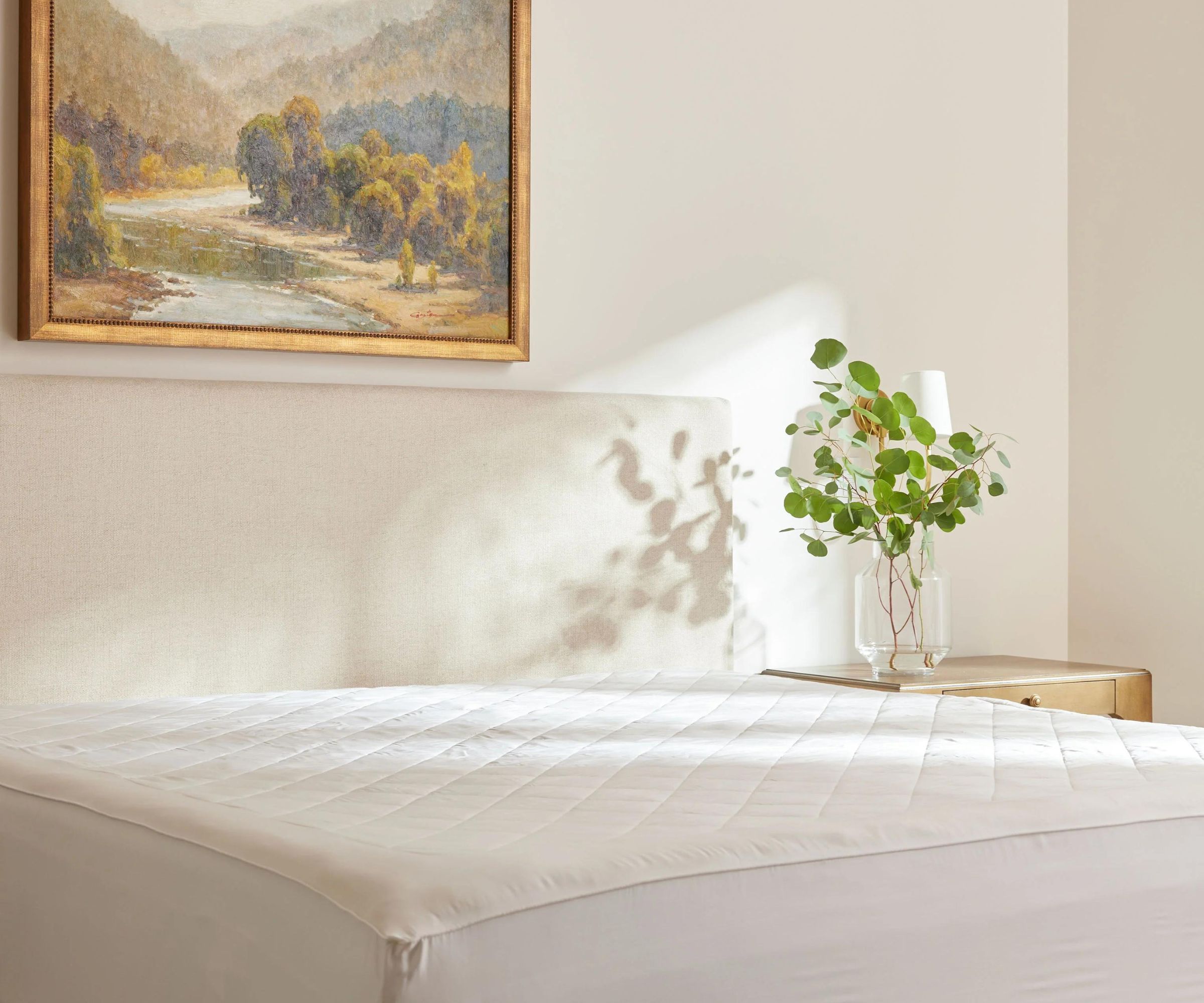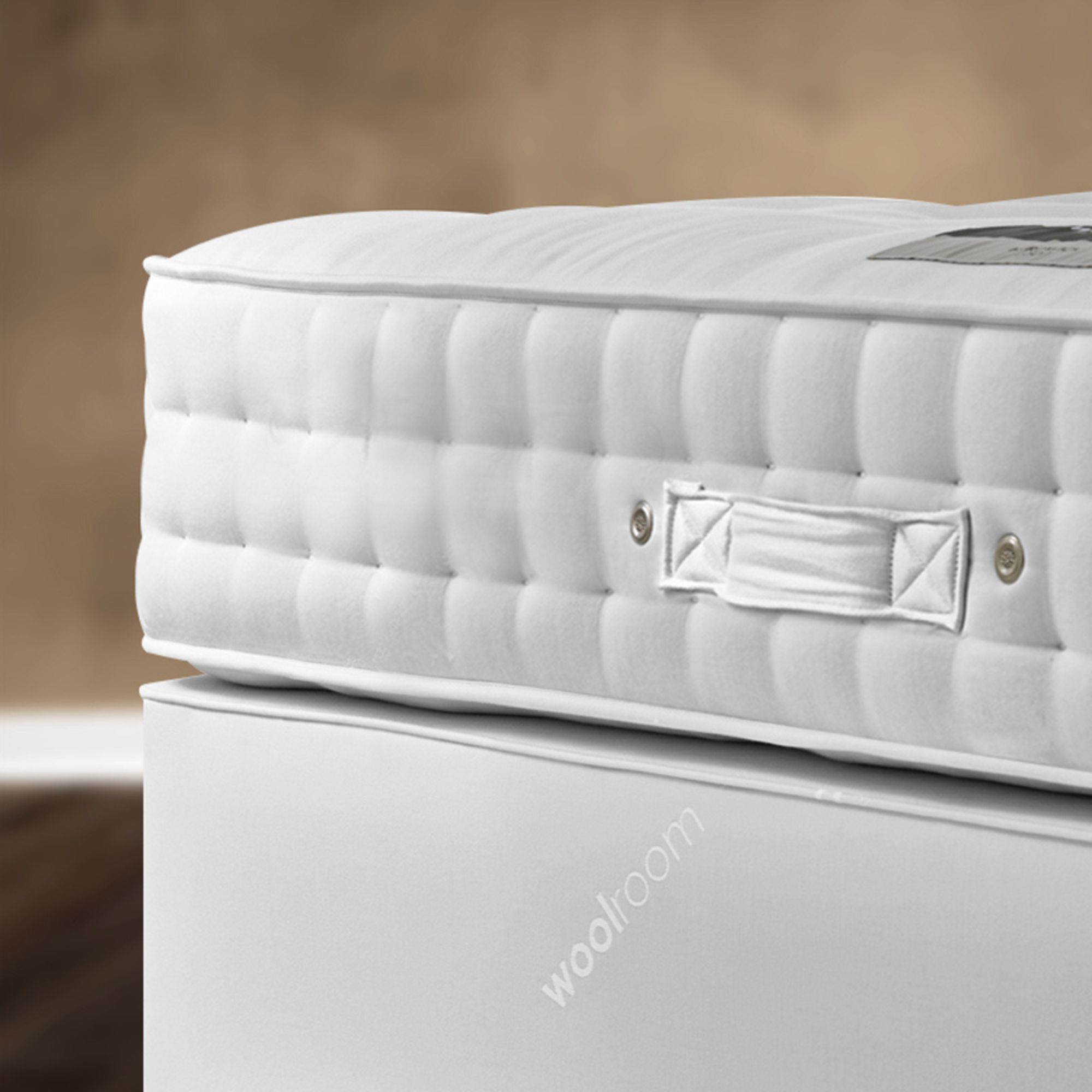
If you're a hot sleeper, like I am, then you might be dreading the start of summer. Sure, it's nice to feel a bit of sun on your skin during the day, but it makes it so much harder to sleep at night. If the sticky sheets don't keep you up, the whir of the AC certainly will.
Over the years, I've found that the best way to keep cool is to buy cooling bedding. Natural fibers are your best bet to dissipate heat and wick moisture: I'm talking breathable bamboo, crisp cotton, and (surprisingly) organic wool.
If you're a hot sleeper, and you're keen to learn how to sleep better as the weather warms up, I'd encourage you to do a bedding audit and work out exactly what you're sleeping on. As soon as you replace some of your stuffy synthetics with naturally thermoregulating fibers, you'll start to feel the difference.
The hot sleeper's checklist: what to buy
To kick things off, I've rounded up some of the best cooling bedding from specialist sleep stores. Many of these products are tried and tested by a member of our expert team. Each piece is assessed for thermoregulation, obviously, as well as comfort, quality of construction, and the all-important price. Where we haven't been able to get our hands on a product, we've scoured the specifications and read countless customer reviews to make sure we're recommending the best cooling bedding.
1. A cooling pillow

Switching out your tired, old pillow for one of the best cooling pillows is one of the easiest and most affordable upgrades you can make as a hot sleeper. With the right insert and a cooling cover, you should feel like you're always sleeping on the cool side of the bed.
In terms of materials, I recommend different fills for different sleep positions. Latex, which should feel thick and firm beneath your head, could be just the thing for side sleepers looking for a supportive pillow. If you sleep on your back or side, you might like something softer: bamboo blends or wool cuttings are squishy and springy.
If you love the feel of memory foam, but you're keen to sleep cool, then I suggest you look for pillows with a cooling gel infusion: charcoal, copper, or green tea should do the trick. That way, you get to keep all the plush comfort of memory foam and still wake up feeling fresh.

Filled with Talalay latex and wrapped in cooling cotton, this is one of the best pillows on the market. It's highly suitable for hot sleepers and vegan shoppers.

This cooling pillow is totally adjustable. You can remove and replace the inserts until you reach your ideal thickness and feel.

Wool can hold up to a third of its weight in moisture overnight and let it evaporate within minutes the next morning. That's why it's the best option for hot sleepers with night sweats.
2. A cooling sheet set

As a hot sleeper who still likes to sleep with a layer, I don't know what I'd do without my summer sheet set. You're looking for something lightweight that's breathable yet durable. I recommend the best linen sheets, woven from hollow flax fibers to optimize airflow.
If you're buying on a budget, you could shop a set of the best Amazon cooling sheets. Many are made from microfiber, which isn't the most environmentally friendly option, but you'll also find a fair share of bamboo, eucalyptus and cotton.
It's not all about materials: you should also consider the weave of your sheets. Hot sleepers should look for loose weaves with plenty of interlacings to boost breathability. I suggest something like cotton percale: it's woven one thread under, one thread under, with lots of little gaps to optimize airflow.

Made from bamboo lyocell, these are the best bed sheets for hot sleepers and eco-conscious shoppers. Not only is bamboo naturally cooling, but it grows three times faster than we can harvest it, so it's a great sustainable option.

Thanks to a quick enzyme wash, these linen sheets aren't stiff or scratchy: they should feel nice and soft straight out of the bag.

Made from long-staple cotton and woven into crisp percale, these are the sort of sheets I'd expect to see in a high-end hotel or luxury spa.
3. A cooling comforter

If you don't tend to sleep with sheets, you might prefer one of the best cooling comforters. Down alternative comforters tend to sleep cooler, though they lack a little of the loft that you get from real down, with all its little air pockets.
A lot of the best duvet inserts come in a range of warmths or weights, including Light, All-Season, and Ultra-Warm. Seriously hot sleepers and anyone who suffers from night sweats or hot flashes should stick to lightweight comforters: the lighter the fill, the lower the heat retention.
If you live in a temperate climate, you might not want to commit to a cooling comforter that you can't use year-round. In that case, you should explore the option of an adjustable comforter or duvet insert. You'll get two or three layers that you can button together for warmth or pull apart for cool comfort.

This cooling comforter is just a quarter of an inch thick. This thing could see you through a heatwave and you wouldn't break a sweat.

I'm testing this organic comforter at the moment and I'm loving it: wool makes the perfect thermoregulator as we transition between seasons.

This is one of those adjustable comforters I was talking about. For ultimate custom comfort, you get to choose which parts make up the whole: I'd go for a 2.5 + 9 tog.
4. A cooling mattress protector

It's possible that you're a hot sleeper, but you quite like the pillow, sheets, and comforter you already have. One quick and easy change you could make that won't impact aesthetics is to layer the best cooling mattress protector over your bed.
The whole point of a mattress protector is to safeguard your mattress from sweat, spills and stains. The best mattress protector should go the extra mile to dissipate latent heat from your mattress before it makes its way to your body.
While you could pick up a cooling mattress protector from your local home retailer, I recommend shopping at a specialist sleep store. That's where you'll find the good stuff that's waterproof and hypoallergenic to suit every sleeper and any situation.

This cooling mattress protector is made from special thermoregulating fabric that absorbs and stores heat and moisture to keep you cool and dry.

Made from a unique blend of hypoallergenic materials, the Helix GlacioTex Mattress Protector is built to bust the bacteria that breeds in hot, damp environments, such as beds.

Cool to the touch and moisture-wicking, the Leesa Ultra Cool Mattress Protector could be a game-changer for hot sleepers with a bit of cash to spare.
5. A cooling mattress pad or topper

When you invest in one of the best cooling mattress toppers and pads, you can elevate the feel and lower the temperature of your mattress in one fell swoop.
There are a few subtle yet significant differences between mattress pads and mattress toppers. Mattress toppers tend to be thicker, able to fundamentally change the feel of your mattress, while mattress pads come attached to a fitted sheet.
The best mattress pad or topper for a hot sleeper might feature thin strips of breathable materials or an infusion of a cooling gel. If I were you, I'd err on the thinner side: the sweet spot for a mattress topper is around three inches thick. That should be enough material to alter the feel of your bed, but not so much material that the topper starts to trap heat.

This little layer is filled with thermoregulating fibers that just so happen to be hypoallergenic, environmentally sustainable, and soft to the touch. It's the perfect combination.

Out of all the mattress toppers we've ever tested, this is our favorite. One of our sleep experts, Kaitlin, sampled this topper during one hot July and she could finally sleep without AC.

I just finished testing this mattress pad. I'm a big fan of the low profile, which makes for a snug and subtle fit beneath your fitted sheet.
6. A cooling mattress

If you've tried everything, and you're still waking up in a sweat, then the problem might not be your bedding, but your bed. One of the best cooling mattress might be your only solution.
Admittedly, buying a brand new mattress is expensive. If you're in two minds about it, I suggest you weigh up the pros and cons of getting a cooling mattress topper vs a new mattress. One is a quick fix, but the other does the deep work to help you sleep sweat-free.
There are lots of different mattress types, and some are better suited to hot sleepers. Anything with springs is a safe bet: you'll boost breathability as the coils compress and depress. I suggest you steer clear of memory foam: it's the worst mattress material for heat retention. If you're really set on memory foam, you should narrow your search to cooling gel mattresses to dissipate heat.

Naturally thermoregulating, soft yet springy, wool would make a great organic fill for a supportive mattress. As fills go, though, wool is very heavy, so you might struggle to lift and flip the bed.
You can find more detail in our Woolroom Hebridean 3000 Mattress.

Filled with organic latex and wrapped in organic wool and cotton, this is one of the best organic mattresses on the market, and it's not even that expensive.
You can find more detail in our PlushBeds Botanical Bliss Organic Latex Mattress review.

This hybrid mattress has all the airflow of an innerspring. Better yet, it's infused with copper for a healthy dose of antioxidants to keep you feeling fresh.
You can find more detail in our Bear Elite Hybrid Mattress review.
Hot sleeper FAQs
Why do I get so hot when I sleep?
There might be a whole host of things making your bedroom too hot. The problem could be your heavy curtains, which trap heat as they block light, or your dark color scheme. Then, there's the stuff you put next to your body. I don't just mean bedding, either: if you sleep in synthetic pyjamas, you might find yourself sweltering in a pool of your own sweat.
How hot is too hot to sleep?
According to the National Sleep Foundation, anything in excess of 70°F is too hot to sleep. That's because higher temperatures in the bedroom are linked to less time spent in the restorative sleep stage, REM. If your room tends to trap heat, I suggest you switch on the AC and invest in some of the best cooling bedding.
Final thoughts
Once you've bought all of this bedding, it's important to take good care of it. Be sure to avoid these bedding laundry mistakes, or your cooling products might not make it through the summer.
If you're not in the market for new bedding, but you'd still like to sleep cool this summer, you should read our expert guide for how to keep a bedroom cool. Quick and easy hacks include cool flannels and air-purifying plants. If you're feeling ambitious, you could crack open the paint cans and redecorate your room until it feels lighter and cooler for sleep.







